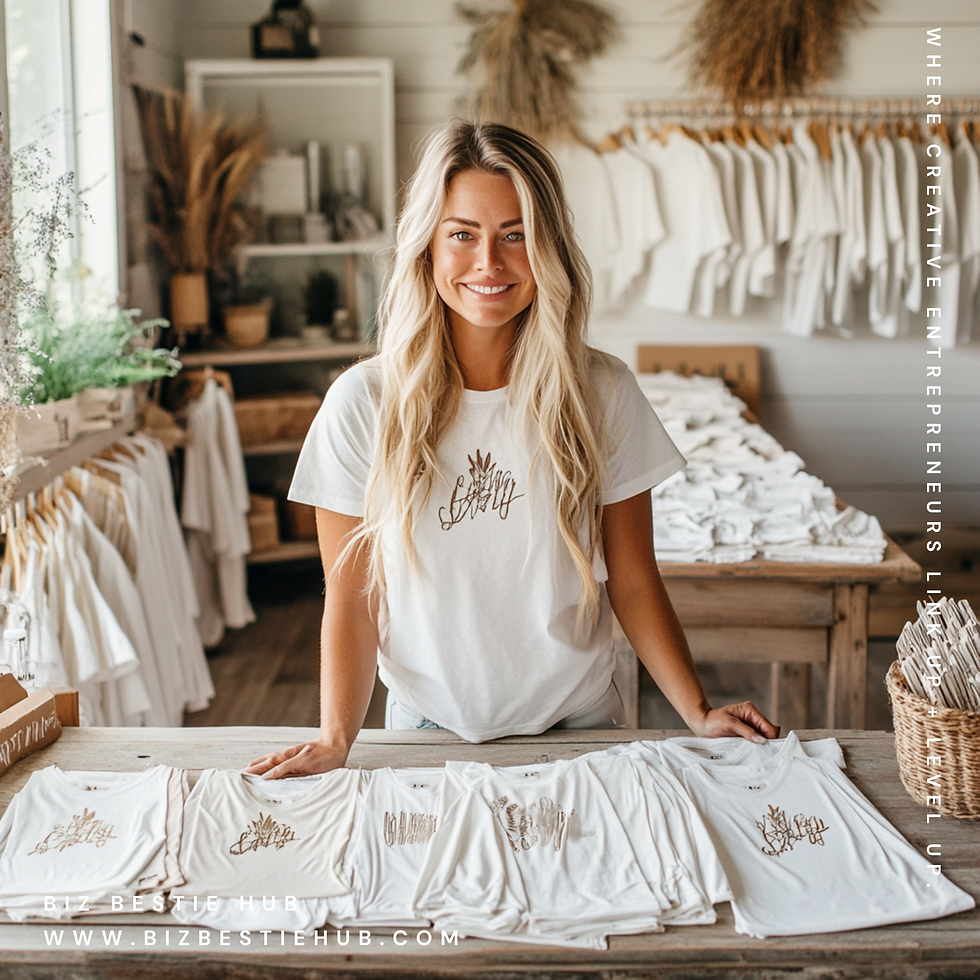How Clarifying Who Is NOT in Your Target Audience Can Save You a Headache in Q4
- Cheri Tracy
- Oct 21, 2024
- 3 min read
Why Knowing Your Audience (and Who’s Not) Will Reduce Returns and Boost Satisfaction
As handmade sellers, we often focus on attracting the right people to our products. But here’s a crucial tip—knowing who is not in your target audience is just as important as knowing who is. This becomes especially vital in Q4, when holiday sales surge, and so do the returns if expectations aren't met.
Many sellers overlook this key step, but by setting clear expectations and honing in on who your products are really for, you can save yourself from the post-holiday return nightmare and build stronger relationships with the customers who truly love what you make.
Why Defining Your "Non-Audience" Is Important
It’s tempting to want to appeal to everyone, especially during the busy shopping season when you’re hoping to maximize sales. But if your product isn’t right for someone, it's better that they don’t buy it in the first place than for them to buy and return it. Returns can eat into your profits, take up valuable time, and lead to frustration.
Real World Example: In my own business, I learned this the hard way. I once launched a bath bomb collection geared toward relaxation and mindfulness. I marketed it broadly, and sales were great—until the returns started pouring in after the holidays. It turns out, some customers were expecting instant fizz and bold colors (like Lush), not subtle scents and slow melts. By casting too wide of a net, I ended up attracting people whose expectations didn’t align with my product, leading to returns and disappointed customers.
Since then, I’ve been much more intentional about clarifying who my products are NOT for. When I re-launched the line, I made it clear that these bath bombs were slow-fizzing and scent-focused—perfect for a calming bath, but not for those who wanted a colorful explosion of bubbles. This saved me from unnecessary returns and attracted the right buyers.

How to Clarify Who Is Not Your Audience
Highlight Specific Features or Limitations Make it clear if your product has specific features that may not suit everyone. For example, if your handmade candles are unscented and minimalist, call that out for buyers looking for heavily scented or decorative candles.
Use Contrast to Differentiate Just as you focus on what your product is, don’t be afraid to talk about what it isn’t. This helps potential buyers filter themselves out. For example, “This product is NOT for you if you’re looking for fast-acting or brightly colored bath products” sets the expectation clearly.
Refine Your Messaging When crafting your product descriptions, emphasize who will benefit the most and who might not. For instance, if your handmade wool scarves are pricier due to the high-quality materials, be upfront about that. This discourages bargain shoppers while attracting those willing to invest in quality.
Benefits of Being Clear About Your Audience
1. Reduce Returns
By being upfront about your product's characteristics and intended audience, you set the right expectations. Customers who buy know exactly what they’re getting, leading to fewer returns.
2. Build a Loyal Customer Base
Focusing on attracting the right customers will build a stronger relationship with your audience. Those who understand and appreciate your product will come back for more and recommend it to others.
3. Save Time and Energy
Dealing with returns is time-consuming. By making your messaging clear from the start, you save time on customer service issues and restocking returned items, allowing you to focus on growing your business.
Practical Steps for Q4
As Q4 approaches, now is the time to refine your product descriptions, wholesale catalogs, and marketing materials. Use these to clearly outline who your product is for and who it’s not.
Real World Example: Last year, heading into Q4, I made sure to update all of my holiday listings to reflect the right audience. I used phrases like “perfect for slow mornings and self-care routines” to attract the customer who wanted a relaxing holiday gift, and I emphasized that my products were unscented and gentle. By doing this, I minimized returns and had more repeat buyers who loved what they received.
Questions to Ask Yourself
As you prepare for Q4, ask yourself these two key questions:
What experience am I selling?
Can I use seasonality to attract the right buyers and clarify who this product is for?
By refining your messaging and targeting the right customers, you’ll be setting yourself up for a successful holiday season with fewer returns and happier customers.









Comments